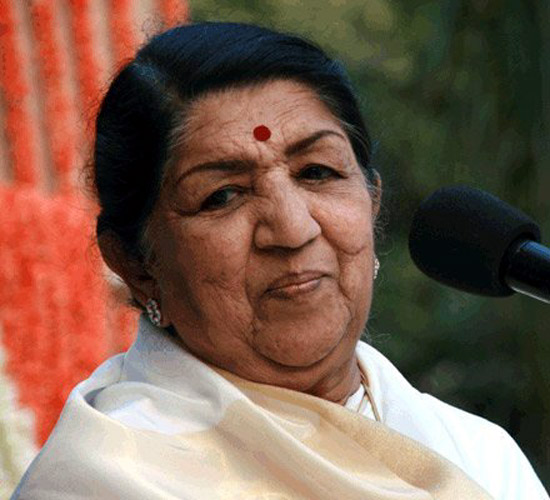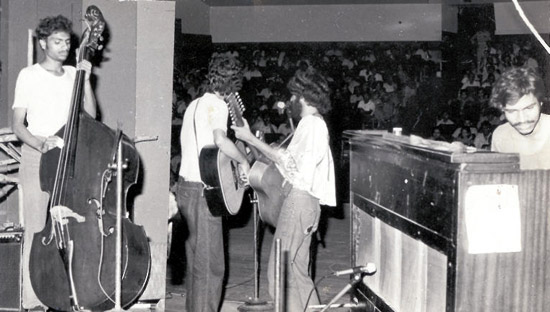Music: Modern Forms
Filmi and Pop
Beginning with the film Alam Ara (1931), Indian film music has developed an extensive reach, with filmi sangeet utilizing classical ragas, semiclassical tunes, folk music, and various world music genres. In the early years, performers like Bal Gandharva, Kundan Lal Saigal, Suraiya, and Noorjehan sang the songs themselves; playback singing (that is, a separate vocal track recorded usually by a specialized playback singer and overdubbed) came later. The filmi songs highlight a scene, take the story further, or are simply a formulaic device; some films work only on account of their songs, while others, like Satyajit Ray’s films (such as Jalsaghar and Charulata), are primarily cinematic with the additional benefit of beautiful music. Lata Mangeshkar, Asha Bhosle, Geeta Dutt, Shamshad Begum, Mohammad Rafi, Manna Dey, Hemant Kumar, Kishore Kumar, Sonu Nigam, and Shreya Ghoshal are some notable singers, and Naushad, Shankar-Jaikishen, Vasant Desai, C. Ramchandra, and A. R. Rahman are some well-known film composers and music directors.
Indian pop music takes elements from classical, semiclassical, folk, and Western genres like jazz, rock, disco, pop, reggae, and hip-hop. Fusion music came into fashion after Ustad Ali Akbar Khan and Pandit Ravi Shankar’s musical collaborations with Western artists. Nonfilmi pop began in the 1970s with the catchy songs of Nazia Hassan, Remo Fernandes, and Usha Utthup, and really caught on in the 1990s, with singers like Alisha Chinai, Daler Mehndi, and Ila Arun finding a wider audience. TV music programs further sparked an interest in popular music.
Bangla Rock, Hip-Hop, and Indo-Trance
Bangla rock takes its inspiration from diverse sources, such as Western rock, metal, blues, jazz, Baul and Batiali songs, Bangla and Assamese folk, and Carnatic and Hindustani classical. It is performed in Bengali to the accompaniment of electric guitar, keyboard, violin, flute, and drums. The first rock band, Moheener Ghoraguli, formed in the 1970s, but the rock scene evolved in the 1990s. Calcutta pubs began to feature live rock music, rock music festivals and events mushroomed, and computer technology facilitated music production. Some of the leading bands are Bhoomi, Krosswindz, Cactus, Fossils, and Lakkhichhara.
A.R. Rahman’s use of rap in film scores, the songs of Baba Sehgal (the first Indian rapper), and foreign-based Indian rappers like Bally Sagoo, Hard Kaur, Blaaze, and VOOFA popularized hip-hop in India. Indian hip-hop utilizes English as well as Hindi and other Indian languages, and, apart from commercial party rap, tackles social issues like religion, politics, and corruption.
Indo-trance music is infused with Indian spiritualism, using various mantras and chants, and mixing Indian percussive elements with techno beats. A well-known style is Goa trance.
Article written for World Trade Press by Sonal Panse.
Copyright © 1993—2025 World Trade Press. All rights reserved.

 India
India 
